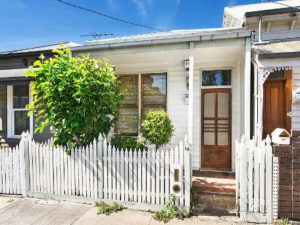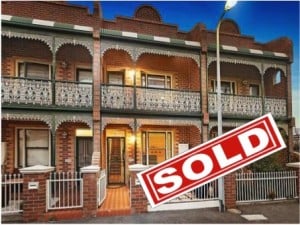Accepting an offer well above the asking price is what every vendor dreams of. Knowing when to push the buyer to a desired level can be a tricky situation to work through, but can yield some unexpected results.
Case Study
Rob Di Vita was acting as a Vendor Advocate, coordinating the sale of a two bedroom fully attached period home in Kensington. The property had been assessed at the mid to high $600,000, based on comparable sales in the street and area within the previous year.
The campaign had attracted some strong interest in the opening week from three parties around the anticipated price range. Initial probing of the potential buyers indicated the highest level of interest at this stage was around $680-$690,000. The vendor would be ecstatic if the property reached anything over $710,000. There were certainly enough indicators to suggest the property could do well under competition at auction. .
 In the second week of the campaign, a buyer came through who showed very strong interest. They wanted to take the property off the market before the auction by submitting a pre-auction offer. Rob advised that to do that the buyer would need to present a strong offer, which would have to be over $700,000 to be considered.
In the second week of the campaign, a buyer came through who showed very strong interest. They wanted to take the property off the market before the auction by submitting a pre-auction offer. Rob advised that to do that the buyer would need to present a strong offer, which would have to be over $700,000 to be considered.
The buyer presented Rob with an offer of $730,000, way above what Rob and the vendor were expecting. It was even above comparable properties in the street. To the vendor’s surprise, Rob recommended that they do not accept the offer. Rob recognized that if the buyer’s initial offer was that high, there would be a strong likelihood they may have more.
Rob advised that the amount offered wouldn’t be enough to take the property off the market. The buyer would need to present a stronger offer to secure the property. Alternatively, they were invited to attend and bid at the auction.
Although there was an element of risk involved in this strategy, Rob was confident that the buyers were very keen and would attend the auction if they were not willing to increase their offer.
At this stage, if there was going to be an increase in amount from the buyers, Rob anticipated something in the vicinity of $5,000 to $10,000 increase, which would be an amazing result. To everyone’s astonishment, the buyer returned with a final pre-auction offer of $760,000!
Rob recommended to his client that they should accept the offer and had contracts signed before the end of the second week of the campaign. Needless to say the vendor was astounded and ecstatic.
Breakdown
The result was achieved because the buyer’s first offer was arguably too strong; instinct derived from years of experience prompted Rob to believe they had more up their sleeve. That the second offer was another $30,000 more was a huge surprise, and it would have likely been too risky to push the buyer any further. 
Understanding when to accept an offer takes a clear head and a bit of experience in order to get the most out of the buyer without turning them away.
In this example, Rob wasn’t being greedy by pushing the buyer for more, even though the original offer was above what the vendor wanted. The buyer shows their hand every time they submit an offer.
There are a number of factors that need to be considered when accepting an offer, so ensure you have the right professional representation to ensure you achieve the best result.
